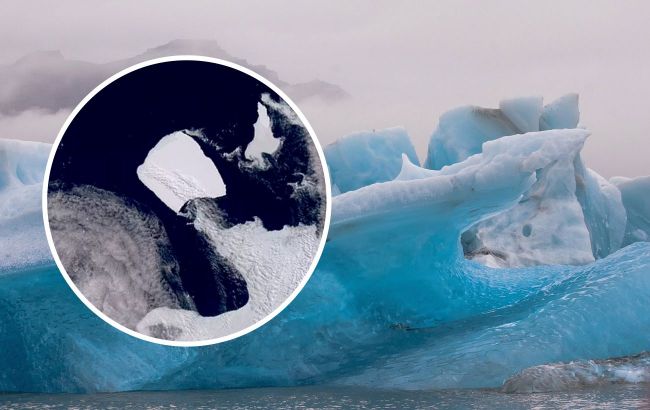World's largest iceberg begins its movement after a 30-year hiatus
 The world's largest iceberg is on the move (collage: RBC-Ukraine)
The world's largest iceberg is on the move (collage: RBC-Ukraine)
The world's largest iceberg A23a, which has been at the ocean floor for over 30 years, is once again on the move. This iceberg is the size of an ice island, and currently, it is moving at a speed of 48 km per day.
What is known about this iceberg, where it is heading, according to the Daily Mail.
The iceberg, named A23a, broke away from the Antarctic coastline in 1986. It swiftly submerged to the bottom of the Weddell Sea, essentially becoming an ice island. Its area spans nearly 4,000 square kilometers, more than doubling the size of Greater London.
Last month, it drifted at high speed, and now the iceberg is on the verge of leaving the waters of Antarctica.
What is remarkable is not only the area but also the thickness of the iceberg, measuring 400 meters. For comparison, the world's tallest skyscraper, The Shard in London, stands at a height of only 310 meters. The weight of this iceberg is just under one trillion tons, making it a hundred times heavier than the Eiffel Tower in Paris. The ice formation has a shape resembling a tooth.


What the largest iceberg in the world looks like (screenshot)
A23a was part of a massive discharge of icebergs from the Filchner Ice Shelf on the White Continent. For many years, it hardly moved and was located, like most icebergs, in the Weddell Sea sector. However, on November 24, 2023, the iceberg broke free and began moving into the Southern Ocean.
Next, it will be thrown into the Antarctic Circumpolar Current, which will propel it towards the South Atlantic through a path known as the iceberg alley. Currently, it is moving at a speed of 48 km per day.
If it heads towards South Georgia, it could create problems for millions of seals, penguins, and other seabirds that reproduce on the island. The enormous size of A23a may disrupt the usual feeding routes for animals, preventing them from properly feeding their offspring.
As shown in the European Space Agency's images, the iceberg is approaching the islands of Clarence and Elephant, located near the edge of the Antarctic Peninsula.
Scientists speculate that after entering the waters of the South Atlantic, the iceberg will begin to lose its volume and weight in the warmer waters.

